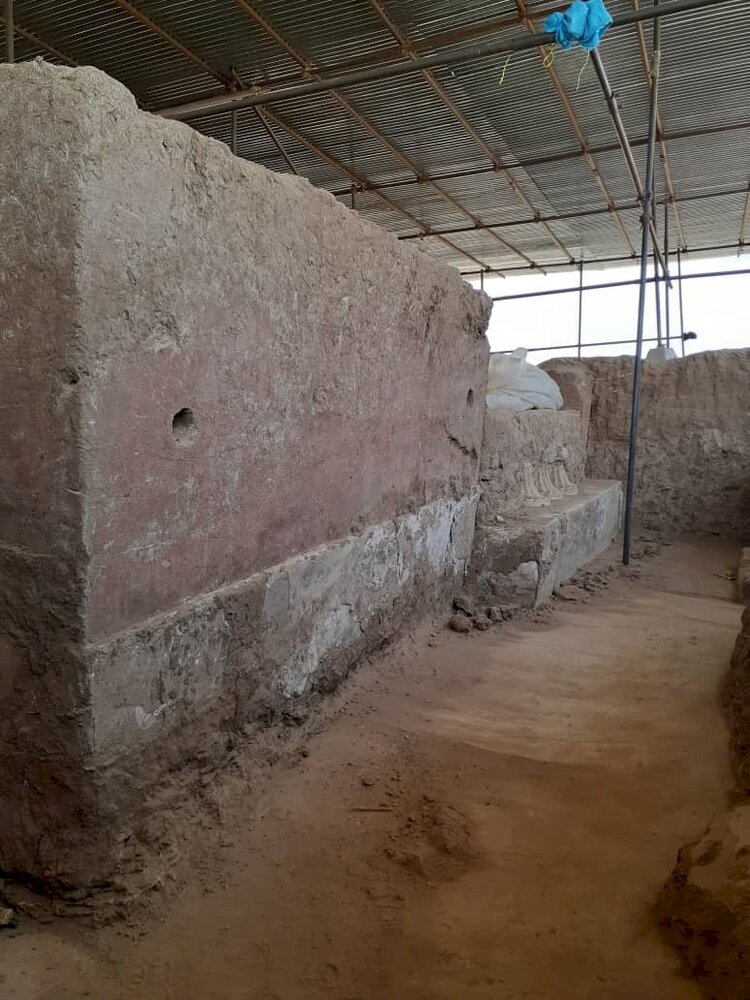Archaeologists resume work on Sassanid site of Vigol

TEHRAN – The ancient site Vigol in central Iran, which had previously yielded a Sassanid-era fire temple, is being excavated for the second time by archaeologists.
In [the Iranian calendar year] 1389 (March 2010 – March 2011), Iranian archaeologists discovered the central part of a Sasanian (Zoroastrian) fire temple with its relatively intact bedding fireplace, CHTN quoted Mohsen Javari, who leads the excavation, as saying on Monday.
In this season, the completion of the plan of the fire temple and its related spaces is on the agenda, the archaeologist said.
“Situated in the central Iranian plateau, this fire temple is considered as one of the exceptional examples of its kind. And available evidence indicates the presence of a religious center of the Sassanid period in this area.”
“So, this excavation and its results are of special importance in the field of Sassanid archeology,” he said.
In 2005 the site of Vigol was identified and a joint team of archaeologists from the universities of Isfahan, Tehran, and Kashan led by Javari began their work on 120 hectares of the ancient site. Vigol is located approximately 10 km north of Aran-Bidgol near Kashan.
In many ways, Iran under Sassanian rule witnessed tremendous achievements of Persian civilization. Experts say that during the Sassanid era (224-651 CE), the art and architecture of the nation experienced a general renaissance.
Rock-carved bas-reliefs are widely deemed as the most impressive and best-known works of Sassanians, of which about thirty are known from the first two centuries of Sassanian rule. The largest number is in Fars, in the majestic silent valley of Naqsh-e Rostam, in the small bay of rocks at Naqsh-e Rajab, on the steep inclines of a gorge at Bishapur. There are also other examples across the country.
In 2018, UNESCO added “Sassanid Archaeological Landscape of Fars Region”, which is an ensemble of Sassanian historical cities in southern Iran, to its World Heritage list. The property comprises eight archaeological sites, including fortified structures, palaces, and city plans in Ctesiphon, Firuzabad, and Sarvestan, all located in modern Fars province.
UNESCO says that the archaeological landscape reflects the optimized utilization of natural topography and bears witness to the influence of Achaemenid and Parthian cultural traditions and of Roman art, which had a significant impact on the architecture of the Islamic era.
In that era, crafts such as metalwork and gem-engraving grew highly sophisticated, as scholarship was encouraged by the state; many works from both the East and West were translated into Pahlavi, the official language of the Sassanians.
Encyclopedia Britannica states that a revival of Iranian nationalism took place under Sassanid rule. Zoroastrianism became the state religion, and at various times followers of other faiths suffered official persecution. The government was centralized, with provincial officials directly responsible to the throne, and roads, city building, and even agriculture were financed by the government.
The dynasty was destroyed by Arab invaders during a span from 637 to 651.
AFM
Leave a Comment